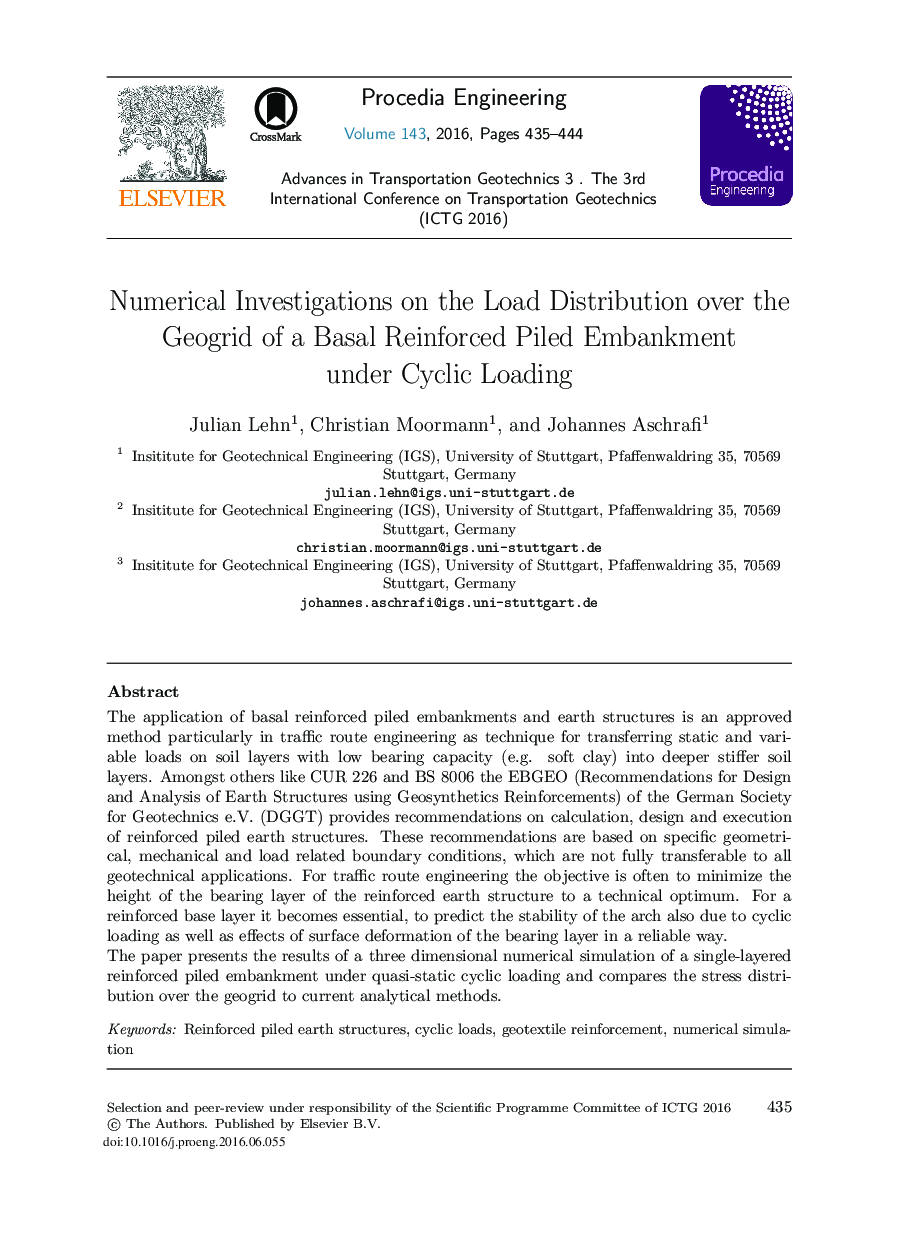| Article ID | Journal | Published Year | Pages | File Type |
|---|---|---|---|---|
| 854239 | Procedia Engineering | 2016 | 10 Pages |
The application of basal reinforced piled embankments and earth structures is an approved method particularly in traffic route engineering as technique for transferring static and variable loads on soil layers with low bearing capacity (e.g. soft clay) into deeper stiffer soil layers. Amongst others like CUR 226 and BS 8006 the EBGEO (Recommendations for Design and Analysis of Earth Structures using Geosynthetics Reinforcements) of the German Society for Geotechnics e.V. (DGGT) provides recommendations on calculation, design and execution of reinforced piled earth structures. These recommendations are based on specific geometrical, mechanical and load related boundary conditions, which are not fully transferable to all geotechnical applications. For traffic route engineering the objective is often to minimize the height of the bearing layer of the reinforced earth structure to a technical optimum. For a reinforced base layer it becomes essential, to predict the stability of the arch also due to cyclic loading as well as effects of surface deformation of the bearing layer in a reliable way.The paper presents the results of a three dimensional numerical simulation of a single-layered reinforced piled embankment under quasi-static cyclic loading and compares the stress distribution over the geogrid to current analytical methods.
